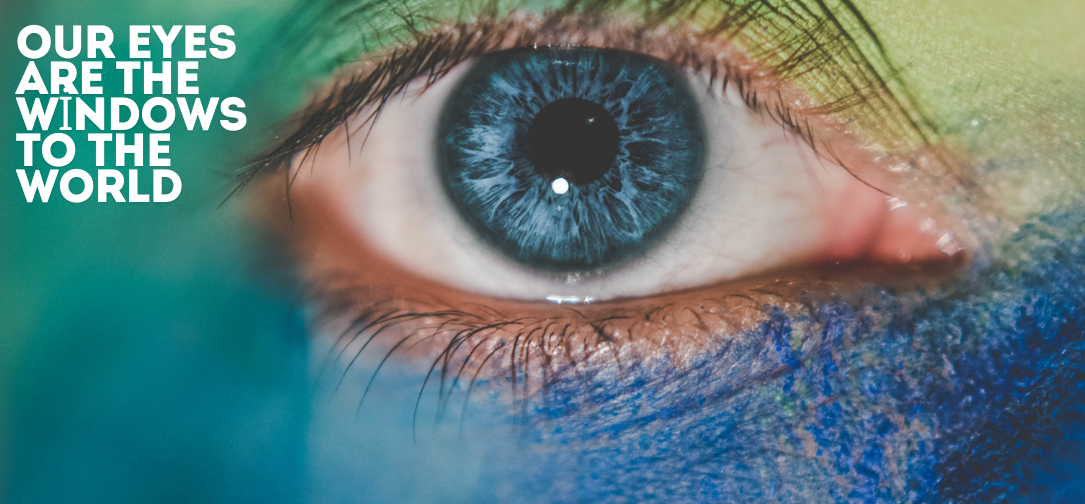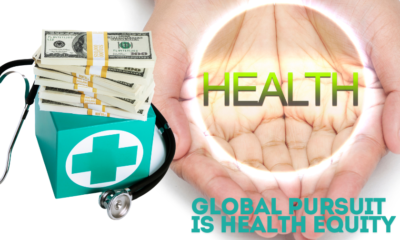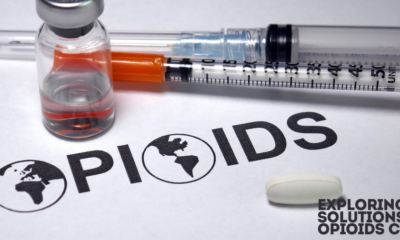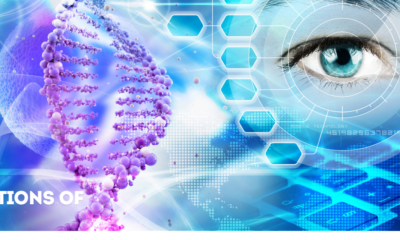Public Health
Eye Health and Vision: Tips for Maintaining Healthy Eyes

Our eyes are the windows to the world. From the moment we wake up to the time we close them at night, they work tirelessly to help us navigate, observe, and interact with our environment. Yet, despite their importance, many people overlook the care their eyes need, often leading to vision problems that could have been avoided. Eye health is crucial not just for vision but for overall well-being, and maintaining it is a lifelong process.
In this detailed exploration, we will delve into the intricacies of eye health, the common issues affecting vision, and tips to maintain healthy eyes. We will examine the structure of the eye, how different factors affect its function, and, most importantly, what you can do to ensure your eyes stay healthy well into old age.
The Importance of Eye Health
The eye is a complex organ that processes light and allows us to see. It captures light rays, focuses them onto the retina, and sends visual signals to the brain via the optic nerve. Our ability to see shapes, colors, and movement, and our capacity to gauge distance, are all results of this intricate process.
Healthy eyes are vital not only for clear vision but also for overall quality of life. Beyond the ability to see, eye health affects our physical, emotional, and even cognitive well-being. Poor eye health can lead to vision loss and untreated vision problems can result in difficulties with reading, driving, recognizing faces, and performing everyday tasks.
Moreover, conditions like glaucoma, cataracts, macular degeneration, and diabetic retinopathy can lead to blindness if left unmanaged. These problems are particularly common in older adults, but the good news is that many vision problems are preventable or treatable. Adopting proper eye care practices can protect against these diseases and help maintain vision as we age.
Anatomy of the Eye: How It Works
To appreciate the importance of eye health, it’s crucial to understand how the eye functions. The human eye is a sophisticated structure composed of several parts:
- Cornea: The transparent, dome-shaped surface that covers the front of the eye. The cornea helps focus light as it enters the eye.
- Pupil: The dark, round opening in the center of the iris that controls the amount of light that enters the eye.
- Iris: The colored part of the eye, responsible for regulating the size of the pupil based on light exposure.
- Lens: Located directly behind the iris, the lens focuses light rays onto the retina. The lens changes shape to allow the eye to focus on objects at different distances (a process known as accommodation).
- Retina: A layer of light-sensitive tissue lining the back of the eye. The retina converts light rays into electrical signals and sends them to the brain via the optic nerve.
- Optic Nerve: The nerve that transmits visual information from the retina to the brain.
- Macula: The central part of the retina, responsible for sharp, detailed vision.
The coordination between these components is delicate and precise. Even small disruptions in any part of the eye can lead to vision problems. For instance, if the cornea or lens is irregular in shape, it can cause refractive errors, such as nearsightedness or farsightedness.
Common Eye Problems and Diseases
Vision problems can stem from a variety of causes. Some conditions are congenital, others develop with age, and some result from environmental factors or lifestyle habits. Below are some common eye conditions:
1) Refractive Errors
Refractive errors occur when the shape of the eye prevents light from focusing correctly on the retina. The main types include:
- Myopia (Nearsightedness): Difficulty seeing distant objects clearly.
- Hyperopia (Farsightedness): Difficulty seeing close objects clearly.
- Astigmatism: Blurred vision due to an irregularly shaped cornea or lens.
- Presbyopia: Age-related difficulty in focusing on near objects.
Refractive errors can often be corrected with glasses, contact lenses, or refractive surgery such as LASIK.
2) Cataracts
A cataract is the clouding of the lens, which leads to blurry vision. Cataracts are most common in older adults but can also occur due to injury, diabetes, or prolonged exposure to ultraviolet (UV) light. The condition can be treated with surgery, where the cloudy lens is replaced with an artificial one.
3) Glaucoma
Glaucoma is a group of diseases that damage the optic nerve, often due to increased pressure inside the eye. It can lead to permanent vision loss if not treated. Glaucoma typically progresses without warning signs until significant vision loss occurs, making regular eye exams crucial for early detection.
4) Age-related Macular Degeneration (AMD)
AMD is a condition that affects the macula, the part of the retina responsible for sharp central vision. It is the leading cause of vision loss in people over 50. The two types of AMD are “dry” (more common and progresses slowly) and “wet” (less common but causes more rapid vision loss). While there is no cure, treatments like medications and lifestyle changes can slow the progression of AMD.
5) Diabetic Retinopathy
This is a complication of diabetes that affects the blood vessels in the retina. Over time, high blood sugar levels can damage these vessels, leading to vision problems and even blindness. Managing diabetes through diet, exercise, and medication can prevent or slow the development of diabetic retinopathy.
6) Dry Eye Syndrome
Dry eye occurs when the eyes do not produce enough tears, or the tears evaporate too quickly. It can result in discomfort, redness, and blurry vision. Causes include aging, prolonged screen time, certain medications, and environmental factors. Treatment options include artificial tears, medications, and lifestyle changes.
7) Conjunctivitis (Pink Eye)
Conjunctivitis is the inflammation of the conjunctiva, the thin layer that covers the white part of the eye. It can be caused by infections (bacterial or viral), allergies, or irritants. Symptoms include redness, itching, and discharge. Treatment depends on the cause, and the condition is usually not serious but can be contagious.
Risk Factors for Eye Diseases
While some eye conditions are unavoidable, several risk factors can increase the likelihood of developing vision problems:
- Age: Many eye diseases, including cataracts, glaucoma, and AMD, are more common in older adults.
- Genetics: Family history plays a role in the risk of certain eye diseases, such as glaucoma and macular degeneration.
- Diabetes: People with diabetes are at increased risk of developing diabetic retinopathy and glaucoma.
- UV Exposure: Prolonged exposure to ultraviolet (UV) rays from the sun can lead to cataracts and other eye conditions.
- Smoking: Smoking is associated with a higher risk of developing cataracts, macular degeneration, and other eye diseases.
- Screen Time: Prolonged use of digital devices can lead to digital eye strain, also known as computer vision syndrome, which causes discomfort and vision problems.
- Poor Diet: A diet lacking in essential nutrients, such as vitamins A, C, and E, as well as omega-3 fatty acids, can negatively affect eye health.
Tips for Maintaining Healthy Eyes
While many eye problems can be serious, the good news is that there are several steps you can take to maintain healthy eyes and protect your vision. Whether you’re young or old, following these tips can help preserve your eyesight for years to come:
1) Get Regular Eye Exams
Routine eye exams are essential for maintaining healthy eyes and catching problems early. Adults should have a comprehensive eye exam every one to two years, even if they don’t wear glasses or contact lenses. Those with certain risk factors, such as diabetes or a family history of eye disease, may need more frequent check-ups. Children should have their eyes checked regularly as well, as early detection of vision problems can aid in development and learning.
2) Eat a Healthy, Balanced Diet
What you eat can have a direct impact on your eye health. A diet rich in fruits and vegetables especially leafy greens like spinach, kale, and collard greens can provide the vitamins and nutrients your eyes need to function properly. Omega-3 fatty acids, found in fish like salmon, tuna, and mackerel, are also important for maintaining healthy eyes, as they help prevent dry eyes and reduce the risk of age-related vision problems.

Other nutrients important for eye health include:
- Vitamin A: Helps maintain a healthy cornea.
- Vitamin C and E: Protect eyes from oxidative stress caused by free radicals.
- Zinc: Essential for the functioning of enzymes in the retina and helps prevent age-related damage.
3) Protect Your Eyes from the Sun
Ultraviolet (UV) rays from the sun can damage your eyes just as they can harm your skin. Over time, exposure to UV light increases the risk of cataracts, macular degeneration, and other eye problems. Always wear sunglasses that block 100% of both UVA and UVB rays, and consider wearing a wide-brimmed hat for extra protection when spending long periods outdoors.
4) Limit Screen Time and Take Breaks
In today’s digital age, many people spend hours in front of screens whether it’s a computer, tablet, or smartphone. This can lead to digital eye strain, characterized by dryness, fatigue, blurred vision, and headaches. To reduce strain, follow the 20-20-20 rule: every 20 minutes, look at something 20 feet away for at least 20 seconds.
Additionally, ensure your screen is positioned at eye level and that the lighting in your room minimizes glare on the screen. Taking regular breaks and blinking frequently can also help keep your eyes moist and reduce discomfort.
5) Stay Active
Regular exercise benefits not only your body but also your eyes. Physical activity helps improve circulation, which can lower your risk of conditions like diabetes and high blood pressure—both of which can lead to eye problems. Studies have also shown that exercise can help reduce the pressure inside the eye, which is particularly beneficial for those at risk of glaucoma.
6) Manage Chronic Health Conditions
If you have a chronic health condition such as diabetes or hypertension, it’s essential to manage it carefully. Uncontrolled diabetes can lead to diabetic retinopathy, while high blood pressure can damage the blood vessels in the eyes. Keeping these conditions under control through proper medication, diet, and lifestyle changes can significantly reduce the risk of related eye diseases.
7) Quit Smoking
Smoking is a major risk factor for many serious eye diseases, including cataracts, macular degeneration, and optic nerve damage. If you smoke, quitting can significantly reduce your risk of vision loss. Even after years of smoking, quitting can improve your overall eye health and lower the likelihood of developing these conditions.
8) Use Protective Eyewear
When engaging in activities that pose a risk to your eyes such as playing sports, using power tools, or working with hazardous materials, wear appropriate protective eyewear. Sports-related eye injuries are common, but wearing safety glasses or goggles designed for specific activities can help prevent damage.
Similarly, if you work in a job that involves exposure to chemicals or airborne particles, it’s essential to use protective eyewear to reduce the risk of injury or infection.
9) Stay Hydrated and Use Eye Drops
Keeping your eyes hydrated is crucial for preventing dry eye syndrome, which can lead to discomfort and blurred vision. Drink plenty of water throughout the day to ensure your body and your eyes stay hydrated. If you experience chronic dry eyes, over-the-counter artificial tears can help, but consult an eye care professional for long-term management options if the condition persists.
10) Monitor Eye Makeup and Hygiene
For those who wear makeup, it’s important to ensure that your products are clean and safe to use. Expired makeup can harbor bacteria that may lead to eye infections. Always remove your makeup before going to bed to avoid the buildup of residue that can irritate the eyes. Additionally, practice good hygiene by washing your hands before inserting or removing contact lenses, and never share eye products with others.
The Role of Technology in Eye Health
With advances in technology, there are now more tools than ever to help maintain and improve eye health. Innovations in medical imaging allow for earlier detection of eye diseases, and treatments such as laser surgery can correct vision problems with precision. Additionally, apps and software can help monitor eye health, remind users to take breaks from screens, and even simulate eye exercises that reduce strain.
For people with low vision or vision loss, assistive technologies like magnifying devices, screen readers, and voice-activated systems can improve daily functioning and independence. Technology is also making eye care more accessible, with telemedicine services allowing patients to consult with eye care professionals remotely.
Conclusion
Eye health is a crucial aspect of overall well-being, yet it is often taken for granted. The eyes are intricate and delicate organs, and their proper care requires both attention and action. By incorporating simple lifestyle changes such as eating a nutrient-rich diet, protecting your eyes from UV rays, and getting regular eye exams you can preserve your vision and prevent many common eye diseases.
As we age, maintaining healthy eyes becomes even more important. Regular monitoring and timely interventions can help manage age-related conditions like cataracts, glaucoma, and macular degeneration. Additionally, staying aware of environmental factors, technological strain, and personal habits can go a long way in safeguarding our most precious sense of sight.
By making eye health a priority, we not only enhance our ability to see the world clearly but also improve our quality of life and well-being for years to come.
-

 Press Release6 days ago
Press Release6 days agoNura Labs Files Revolutionary Patent: AI-Powered Wallet Solves the $180 Billion Crypto Staking Complexity Crisis
-

 Press Release4 days ago
Press Release4 days agoGlobal Compound Feeds and Additives Industry Report: Market Expansion and Competitive Insights to 2035
-

 Technology4 days ago
Technology4 days agoWhat to Know Before Switching Cell Phone Network Services in 2025
-

 Press Release3 days ago
Press Release3 days agoCrypto WINNAZ Launches First On-Chain Yield Engine for Meme Coins, Enabling 20x–300x Returns
-

 Press Release5 hours ago
Press Release5 hours agoBellarium ($BEL) Price Prediction: Could It Hit $5 by 2026?
-

 Press Release4 hours ago
Press Release4 hours agoWhy Alaxio (ALX) Is a Top Pick for Smart Crypto Investors































